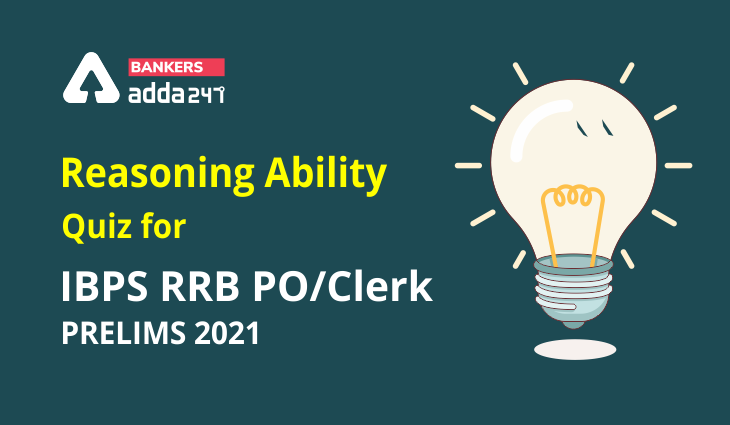Table of Contents
Directions (1-5): Study the following sequence and answer the given questions.
A @ 3 % 4 E N M $ 8 & 6 L D S ♠ 9 8 6 Q Y Z 1 7 % R O G ⧫ 2 I B 2 U &
Q1. Which of the following element is twelfth to the left of the twentieth element from the left end of the given arrangement?
(a) 6
(b) &
(c) M
(d) $
(e) None of these
Q2. If all the symbols are dropped from the series, which element will be fourth to the right of the one which is twelfth from the right end?
(a) 9
(b) O
(c) R
(d) 7
(e) None of these
Q3. How many such numbers are there in the given series which are immediately preceded by a symbol and followed by a letter?
(a) None
(b) One
(c) Two
(d) Three
(e) Four
Q4. Four of the following five are alike in a certain way and forms a group find the one that does not belongs to that group?
(a) 3E%
(b) R⧫2
(c) M&$
(d) D9S
(e) Y7Z
Q5. What should come in place of question mark (?) in the following series based on the above arrangement?
34% N$M 6DL 8Q6 ?
(a) %OR
(b) 7Z%
(c) O%R
(d) R%O
(e) R%7
Directions (6-10): The following questions are based on the five three-digit numbers given below.
763 952 841 695 391
Q6. If all the digits in each of the numbers are arranged in increasing order within the number then, which of the following number will become the lowest in the new arrangement of numbers?
(a) 391
(b) 695
(c) 763
(d) 841
(e) None of these
Q7. If all the numbers are arranged in ascending order from left to right then, which of the following will be the sum of all the three digits of the number which is 3rd from the right in the new arrangement?
(a) 18
(b) 16
(c) 14
(d) 11
(e) None of these
Q8. What will be the difference when the third digit of the 3rd lowest number is multiplied with the second digit of the highest number and third digit of the 2nd highest number is multiplied with the second digit of the lowest number?
(a) 4
(b) 8
(c) 9
(d) 5
(e) None of these
Q9. If the positions of the second and the third digits of each of the numbers are interchanged then, how many even numbers will be formed?
(a) None
(b) One
(c) Two
(d) Three
(e) Four
Q10. If one is subtracted to the second digit of each of the numbers and one is added to the third digit of each number then, how many numbers thus formed will be divisible by three in the new arrangement?
(a) None
(b) One
(c) Two
(d) Three
(e) Four
Directions (11-15): Following questions are based on the five three-digit numbers given below.
123 320 287 424 521
Q11. If all the digits in each of the numbers are arranged in ascending order within the number then, which of the following number will become the highest in the new arrangement of numbers?
(a) 123
(b) 320
(c) 287
(d) 424
(e) 521
Q12. If all the numbers are arranged in descending order from left to right then, which of the following will be the product of 3rd digit of 2nd number from left and 3rd digit of 2nd number from right in new arrangement?
(a) 26
(b) 24
(c) 28
(d) 20
(e) 30
Q13. What will be the resultant when 3rd digit of the highest number is multiplied with the 2nd digit of the lowest number?
(a) 2
(b) 6
(c) 8
(d) 16
(e) 12
Q14. If the positions of the second and the third digits of each of the numbers are interchanged then, how many odd numbers will be formed?
(a) None
(b) One
(c) Two
(d) Three
(e) Four
Q15. If one is subtracted from each of the numbers then, how many numbers thus formed will be divisible by three?
(a) None
(b) One
(c) Two
(d) Three
(e) Four
Practice More Questions of Reasoning for Competitive Exams:
Solutions
S1.Ans(c)
S2.Ans(c)
S3.Ans(d)
S4.Ans(b)
S5.Ans(a)
S6.Ans (a)
S7.Ans (b)
S8.Ans (e)
S9.Ans(c)
S10.Ans (a)
S11. Ans. (c)
S12. Ans. (c)
S13. Ans. (a)
S14. Ans. (a)
S15. Ans. (b)
Click Here to Register for Bank Exams 2021 Preparation Material





 GA Capsule for SBI Clerk Mains 2025, Dow...
GA Capsule for SBI Clerk Mains 2025, Dow...
 The Hindu Review October 2022: Download ...
The Hindu Review October 2022: Download ...
 NICL Assistant Mains Cut Off 2025 Out, C...
NICL Assistant Mains Cut Off 2025 Out, C...







